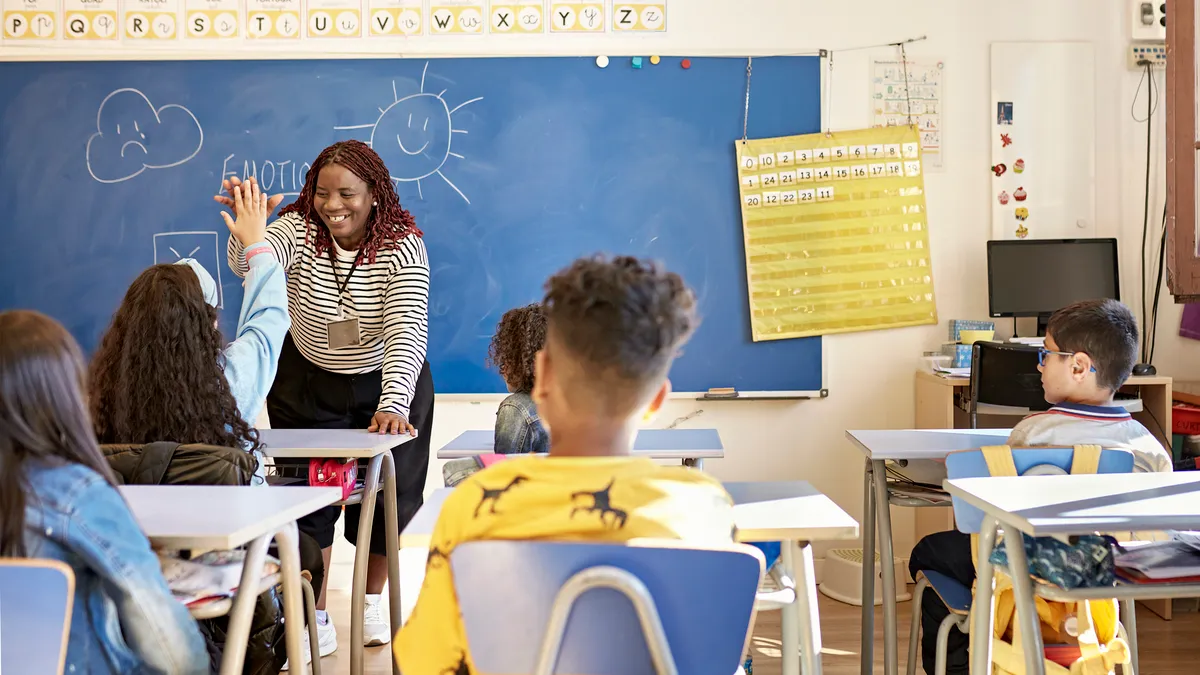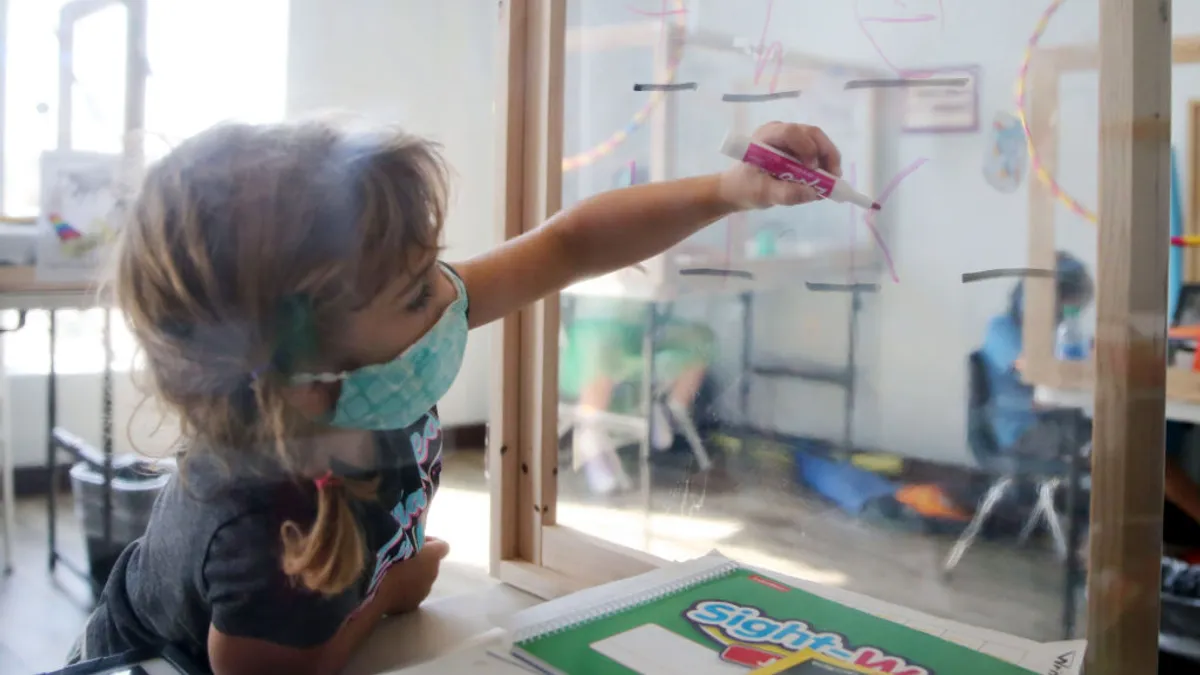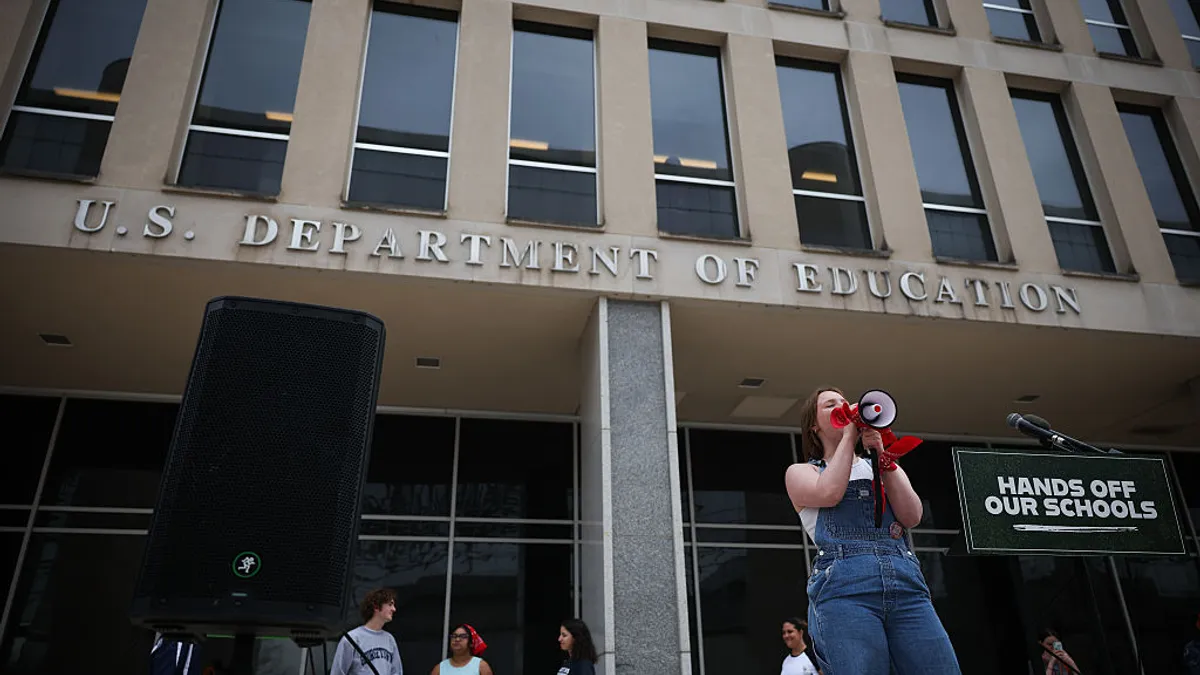In letters submitted to the U.S. Department of Education, disability rights advocates and school administrators agree on the importance of Section 504 of the Rehabilitation Act of 1973 but differ on how to update regulations implementing the landmark law — which have been a source of confusion for K-12 schools.
Advocates for disability rights want more alignment between Section 504 and the Individuals with Disabilities Education Act to help protect the rights of students with disabilities, according to a July 1 letter submitted by 36 organizations to the department.
In a separate letter submitted by the Council of Administrators of Special Education and AASA, The School Superintendents Association — which both represent school administrators — the organizations say IDEA's service protections for special education and Section 504's accessibility protections need clearer separation to improve understanding and implementation by educators and families.
Students who qualify for special education have a disability under one or more of IDEA's 13 disability categories and, as a result of that disability, need services to make progress in school.
Students who qualify for Section 504 have a physical or mental disability that impacts a major life activity, such as breathing, walking or learning. Section 504-eligible students are provided accommodations to prevent discrimination on the basis of disability in an educational setting. Students may be eligible for services and accommodations under both IDEA and Section 504.
The letters were sent in response to the Education Department's Office for Civil Rights's request in May for comments in preparation for a formal update to Section 504 regulations.
The department had received more than 400 comments by July 6, according to Seth Galanter, OCR's deputy assistant secretary for legal affairs. OCR has also conducted 17 listening sessions with 141 different organizations, attended by 103 people.
Although the department did not have a set deadline for submitting comments — and will continue accepting comments until it develops proposed amendments — it had asked that people submit longer, more detailed comments by the end of June.
The department expects to issue proposed rules in May 2023, which would then be open for public comment. Final rules are not expected until 2024.
'The forgotten sister of IDEA'
The Section 504 regulations have remained largely unchanged for 45 years, since their release in 1977. According to the Civil Rights Data Collection, 1.38 million students were served solely under Section 504 in the 2017-18 school year, the most recent data available.
Julie Weatherly, a special education attorney who represents school districts in Alabama, Georgia and Florida, said when she began practicing law in the late 1980s, districts identified very few 504-eligible students. When she first heard 504 mentioned, she thought it was a room number.
Now, she holds trainings regarding schools' obligations under the law. In a June 13 virtual Section 504 conference hosted by CASE, Weatherly discussed administrative requirements, definition of disability under Section 504, child find, evaluations, Section 504 plans and more. She also emphasized the importance of compliance with Section 504, as well as how 504 may be particularly relevant as schools support students during the pandemic.
"I think that COVID has really highlighted some new potential disabilities that we all need to be aware of as it relates to 504 and schools' responsibilities to those students who have disabilities under this important law," Weatherly said during the conference.
Special education legal expert Perry Zirkel, professor emeritus of education and law at Lehigh University, said Section 504 is sometimes referred to as "the forgotten sister of IDEA."
He said there's also a great deal of confusion about Section 504 and how, when and if it coordinates with IDEA, which served 6.7 million students in 2017-18, according to the CRDC.
For example, Zirkel said IDEA and Section 504 both guarantee a "free, appropriate public education," or FAPE, but the laws differ in both the scope and standard for that provision. The scope under the IDEA is special education and related services, but under Section 504, it extends to special and general education, as well as related services.
The substantive standard under the IDEA is the U.S. Supreme Court's Endrew F. standard regarding appropriate progress of students, but the prevailing case law under Section 504 focuses on reasonable accommodation.
"The new regulation could compound confusion or resolve confusion," Zirkel said.
Borrowing from some of IDEA's protections
The Education Task Force of the Consortium for Constituents with Disabilities had asked the Ed Department to address Section 504 compliance after the 2021 release of a report from The Civil Rights Project regarding pre-COVID-19 inequalities for students with disabilities.
The report found that 3,434 school districts — or about 20% of all districts — serving a total of more than 1.8 million students identified no 504-only eligible students.
In its letter regarding Section 504 recommendations, the consortium, along with other disability rights advocacy groups, such as National Center for Learning Disabilities and The Arc of the United States, does not suggest identical language or practices between IDEA and Section 504. Rather, it offers considerations and clarifications of how IDEA protections can also support students who qualify for Section 504-only services.
For example, the groups call for accessible-format educational materials created from the National Instructional Materials Accessibility Standard for IDEA-eligible students to also be available for Section 504-eligible students.
In addition, the groups seek clarity that schools can and "in many cases should" consolidate IDEA and 504 eligibility meetings to ensure the student’s needs are being adequately met by whichever services they are found eligible for.
"The regulations must make clear that when a child is found ineligible for services under IDEA, a district and school team is encouraged to automatically pivot and move from the IDEA eligibility determination meeting to a discussion about the individual’s eligibility under Section 504," the letter said.
Additionally, the groups recommend the regulations make it clear that discipline procedures for Section 504-eligible students that remove students from class for more than 10-days must include a review of whether the unwanted behavior manifested from a student's disability.
The Education Department should also clarify that Section 504's FAPE provision and rights to a discrimination-free education apply to child care, preschool, pre-K, Early Head Start and Head Start settings, the letter said.
Creating clarity between laws' differences
Both disability rights advocates and administrators say amended regulations need to remove outdated language such as "handicapped" and use people-first language, such as "person with a disability."
Resources to school systems to help with Section 504 compliance should also be strengthened, advocates and administrators said.
In regard to keeping a clear distinction between IDEA and Section 504, CASE and AASA write that Section 504's adoption of some of IDEA's language, protections and procedures has contributed to the muddling of the two laws.
The groups want the Education Department to:
- Remove all references to IDEA in Section 504 except where it states that an individualized education program under IDEA can be used as documentation of 504 services if the student is also receiving special education services.
- Clarify and provide examples of a district's responsibilities to identify students who could qualify for Section 504 supports. School systems struggle with this, particularly in places where high-quality multi-tiered systems of support are in place, the groups wrote.
- Clarify the difference of FAPE under IDEA and Section 504. The standard under Section 504 should be related to access to the educational environment compared with peers who are nondisabled, the groups said.
- Clarify what disciplinary protections, if any, Section 504-only students have a right to, as opposed to students served under IDEA.
CASE and AASA are also calling for the department to require that Section 504 plans be put into writing and that parents have a copy of the plan prior to implementation. Currently, the regulations are unclear if the Section 504 plan needs to be a written document.
The letter, written by Phyllis Wolfram, executive director of CASE and Sasha Pudelski, AASA's director of advocacy, carried a note of caution in relation to widespread special educator shortages and pandemic recovery demands.
"As we seek improvements and protections for students with disabilities across the country, we must be careful to ensure any additional protections are not at the expense of an overburdened and highly stressed educational system, which is at the breaking point.”






















